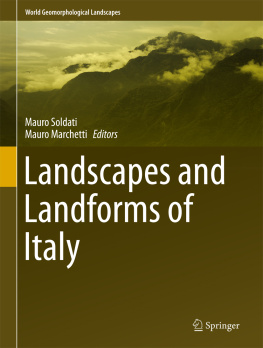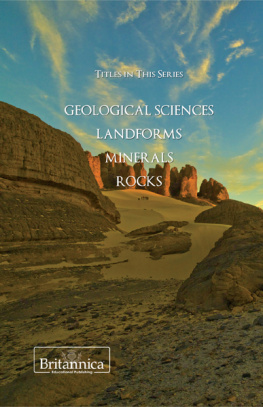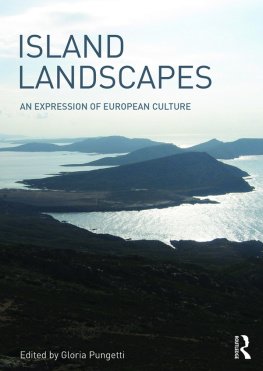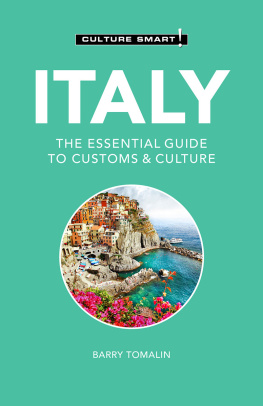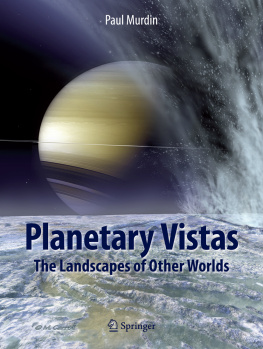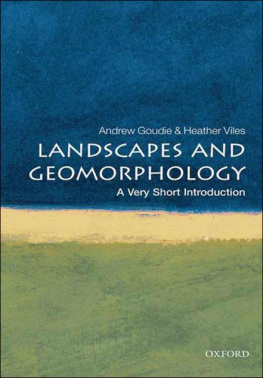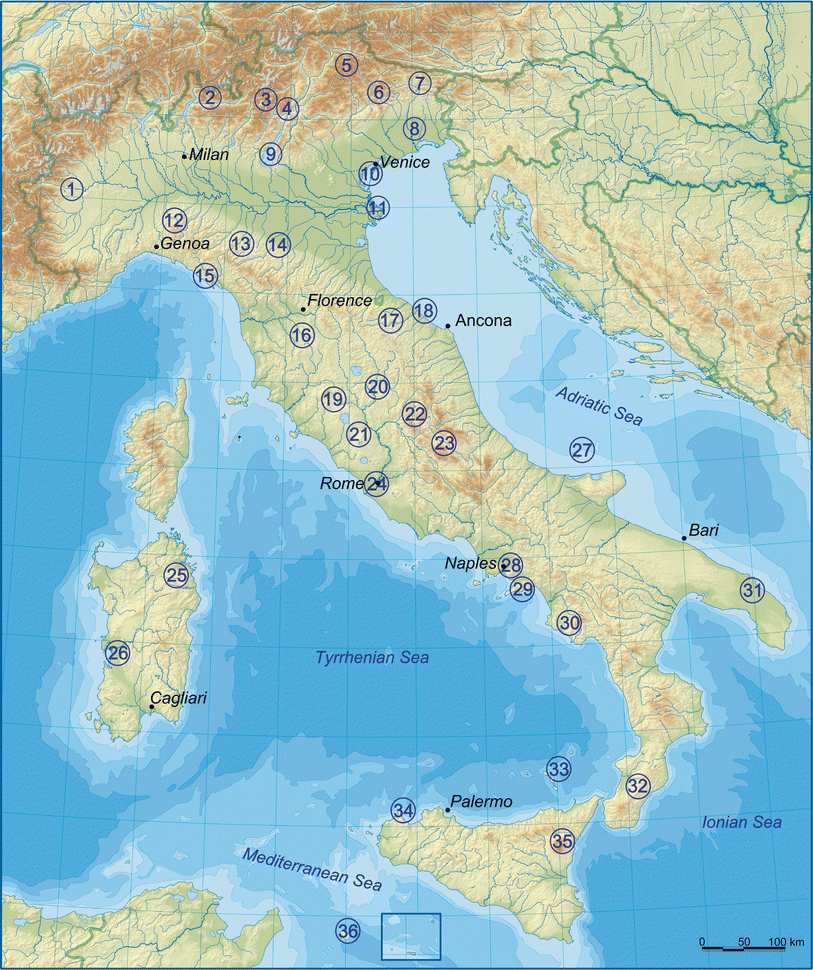1. Introduction to the Landscapes and Landforms of Italy
Alle bellezze ed alle ricchezze scientifiche delle Alpi, noi aggiungiamo quelle cos diverse dellAppennino; e quando avremo descritto i nostri ghiacciai, le nostre rupi e le gole delle Alpi e delle Prealpi, troveremo altri nuovi mondi da descrivere; le emanazioni gazose, le fontane ardenti, le salse e i vulcani di fango, i veri vulcani o vivi o spenti, il Vesuvio, lEtna, poi ancora il mare e le sue isole, i climi diversi, le diverse zone di vegetazione dalla subtropicale alla glaciale, e cos discorrendo, ch lItalia quasi (non balbetto nel dirlo) la sintesi del mondo fisico.
To the beauty and scientific richness of the Alps, we add those so diverse of the Apennines; and when we have described our glaciers, our cliffs and gorges of the Alps and Prealps, we will find other new worlds to describe; the gaseous emissions, the fiery fountains, the mud volcanoes, the true volcanoes either alive or extinguished, the Vesuvius, the Etna, and again the sea and its islands, the different climates, the different vegetation zones from subtropical to glacial, and so on, because Italy is almost (I do not mumble in saying it) the synthesis of the physical world.
Antonio Stoppani
II Bel Paese (The Beautiful Country)
Italian landscapes and landforms show an outstanding variety due to long-term geological processes and climate changes. Landscape diversity in many regions of the country is also deeply connected with human presence since ancient times, cultural and political diversity as well as highly varied customs and traditions. Also for these reasons, Italy has been a privileged destination for generations of travellers, intellectuals and artists attracted by fascinating landscapes which perfectly frame architecture and art masterpieces. Nowadays Italy is one of the most important tourist destinations in the world, with more than 50 million international visitors every year.
The first comprehensive essay on the landscape of Italy, II Bel Paese (The Beautiful Country), was written by Abbot Antonio Stoppani in by Touring Club Italiano, stated that the Italian landscape acquires higher interest and offers more spiritual pleasure when it is observed by those who are able to recognise the compositional elements, the peculiar variety and the natural and human factors that contributed to form it . This is a key issue for those who wish to approach and get to know the Italian territory.
A strong input to the study of physical landscape of Italy was made in 1980s by the National Group Geografia Fisica e Geomorfologia (founded in 1982) of the National Research Council (CNR) which in the year 2000 turned into the Associazione Italiana di Geografia Fisica e Geomorfologia (AIGeo) currently representing Italy as National Scientific Member of the International Association of Geomorphologists (IAG). Within this frame, noteworthy is the journal Geografia Fisica e Dinamica Quaternaria which has been an important recipient of studies on the Italian landscapes and landforms since 1978; the journal is managed by the Comitato Glaciologico Italiano and supported by the AIGeo.
The book Landscapes and Landforms of Italy , which comes under the auspices of both the IAG and AIGeo, aims at providing a synoptic overview of the most spectacular landscapes of Italy and at showing outstanding landforms from both a scientific and scenic viewpoint. The volume is divided into three parts. Part I introduces the great variety of landscapes and landforms of Italy, providing a background on geological, geomorphological and climatic aspects. Part II includes 36 chapters (Fig. ) illustrating different landscapes in a sequence ranging from the high mountains of Northern Italy (the Alps) to the coastal areas of Southern Italy and the islands, passing through hilly and mountain areas of Central Italy (the Apennines). Outstanding landscapes of different origin are described, showing the high geodiversity of the country which includes glacial, fluvial, lacustrine, karst , volcanic, coastal, structural, gravity-induced and aeolian landscapes. Cultural implications on landscapes are also taken into account by two specific chapters devoted to the capital city of Rome and its urban geomorphology, and to landscapes of Central Italy as depicted in Italian Renaissance paintings by famous artists such as Leonardo da Vinci. Part III is concerned with peculiar aspects of the country and collects thematic chapters on geoheritage , geomorphodiversity and wine landscapes. Attention is also given to the famous travel of Johann Wolfgang von Goethe and its appraisal of Italian geological landscapes in the eighteenth century.
Fig. 1.1
Location of landscapes and landforms described in Part II of the book (in brackets are the numbers of respective chapters). Glaciers of Piedmont and Valle dAosta (Chap. ). The blue rectangle includes the Lampedusa and Linosa islands which are located southward, outside the frame (base map courtesy of Litografia Artistica Cartografica S.r.l., Firenze)
This book is the result of an exciting joint venture established among Italian geomorphologists, which has also included the participation of valuable experts from other disciplines. More than 80 authors from 29 universities as well as eight research centres and public agencies have contributed to the book.
Every chapter has undergone a thorough peer-review by a team Italian and foreign experts who acted as reviewers, providing precious contribution to the enhancement of the quality of the manuscripts. In this respect, we would like to thank Pierluigi Brandolini, John J. Clague, Doriano Castaldini, Sirio Ciccacci, Paola Coratza, Sunil Kumar De, Maurizio Del Monte, Marta Della Seta, Monique Fort, Paola Fredi, Christian Giusti, Giuseppe Mastronuzzi, Piotr Migon, Gilberto Pambianchi, Mario Panizza, Alessandro Pasuto, Manuela Pelfini, Luisa Pellegrini, Emmanuel Reynard, Daniele Savelli, John A. Schembri and Claudio Tellini.
We are also very grateful to Piotr Migon, Series Editor, for having invited us to join the amazing editorial project of the World Geomorphological Landscapes, and for his continuous support. We would also like to acknowledge the precious suggestions and constant availability of Robert K. Doe, Springer Senior Publisher, and the assistance by the Springer book Project Coordinators who took care of this book with remarkable dedication and patience, in particular Manjula Saravanan and Mohammed Ali who finalised the volume production. Finally, we are indebted to Andrew Goudie for his valuable advice.
Last but not least, our special thanks go to the individual authors for the enthusiasm with which they responded to our invitation, and for the outstanding efforts made for the success of this important editorial initiative.
References
Almagi R (1959) LItalia. UTET, Torino, 1320 pp
Marinelli O (1922) Atlante dei Tipi Geografici. Istituto Geografico Militare, Firenze, 78 sketches

